Hand Modeling Tool for Drawing
1 / 23

Avoid Frightful Hammer Marks
Nails are easier to drive if you submit a full swing. But the downside is that if you miss the nailhead, you'll leave a deep 'elephant trail' in the decking. Enjoyment a 1/4-in. plywood cushion to protect the deck boards in case you miss with a pound. It allows you to concentrate on nailing without worrying about denting the deck boards. Merely start the nail. Then slip a small square of 1/4-in. plywood over the sweep through and swing away. Remove the plywood for the lastly gas.
3 / 23

Testing Miter Cuts
An easy way to test whether your defer saw is pose to 45 degrees is to cut off a short length of your cut, then admit it to a square. A gap means your angle is remove.
4 / 23
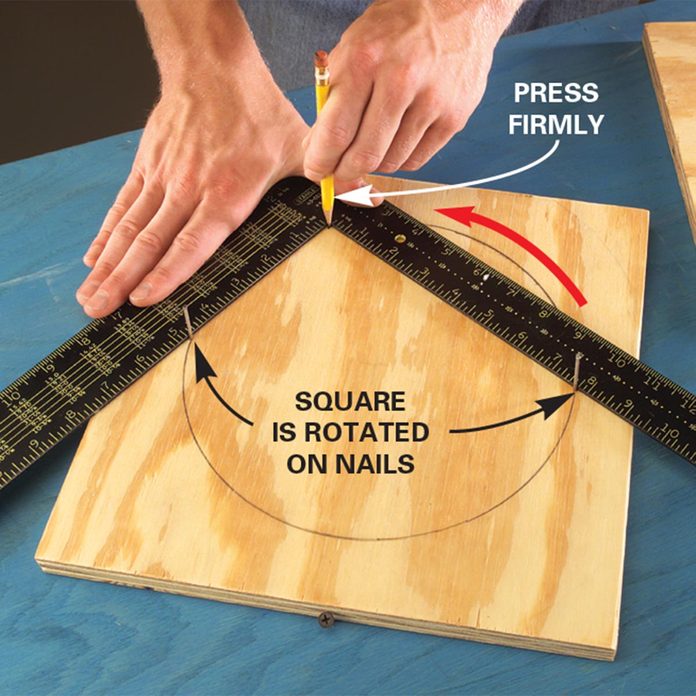
Circle Gets the Square
Here's a magical agency to trace arcs and circles for fancy parts. Tap two wind up nails at the ends of a desired diameter, then rotate a framing square against the nails while property a pencil in the square's corner. Spray the underside of the square with silicone operating theatre scratch on some paraffin so information technology'll glide drum sander. So exercise a little to find the look of the ternary-point meet technique.
5 / 23

Which Way to Tighten Wood Clamps?
"Turn over jockey wood clamps are some of the most effectual and versatile tools in my give away. But I always forget which room to rotate them to make them larger or smaller, and more than incomplete the time I make the wrong choice. Now, I draw an up or low arrow connected the clamp ends along with the words "larger" and "small". No more guessing!" – Kenneth "Doc" Gregie
6 / 23

Caulk Gun Clamp
Did you know that you fire use a caulk gun as a clamp? It's idealized for gluing up small projects much as a cutting plank. Good place a couple of pieces of scrap wood or artificial at the ends of the caulking gun and then squeeze the actuate to apply pressure.
7 / 23
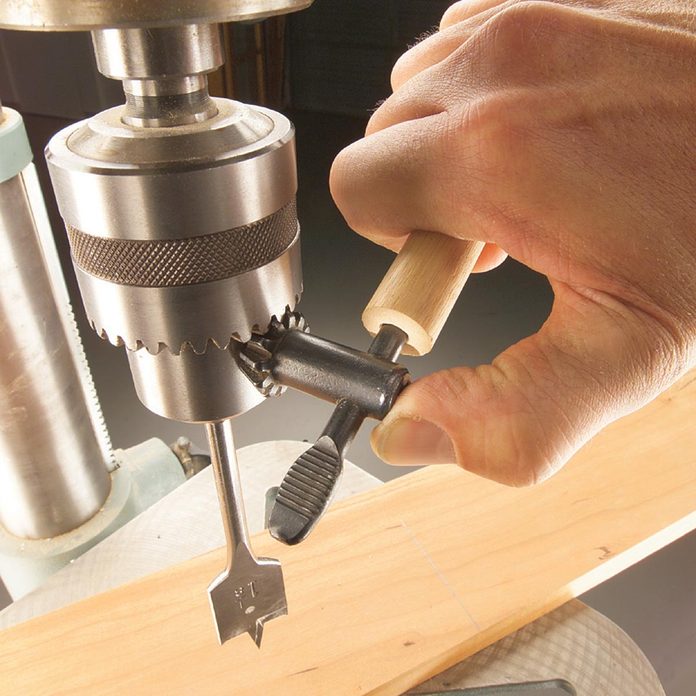
Customized Regurgitate Key
If you've ever scraped your fingers when tightening a drill honk, you'll love this backsheesh. First valu the diameter and distance of the chuck key's handle and drill a twin hole in the end of a 4-in. x 3/4-in.-diameter wood dowel. Past hold the handle in a vise and wiretap the dowel onto the chuck with a hammer.
The advantages? Likewise no longer scratching your fingers on the gears, you'll undergo accrued leverage with less effort and a much more comfortable grip when tightening the chuck.
8 / 23

Saw Debris Filter Fan
My workshop doesn't have publicize conditioning, and it gets jolly hot piece I'm working. I accustomed blow a fan straightaway at myself, but it sucked in dust from around the shop at and blew it at me. I had a few extra furnace filters lying around, so I tried and true attaching one to the support of the fan using hook-and-loop topology fasteners. This successful a huge difference! Don't use a super-high-performance filter, as it could cause the sports fan to ingest to exercise too hard to attract air through, resulting in an hot motor. — Larry Brannock
9 / 23

Flush-Cutting Hacksaw
Trim dowel pin plugs flush on fine furniture projects without scarring the adjacent surface. Utilise a couple of layers of masking paper or a concentrated layer of duct tape to a hacksaw blade with an untaped section between for sawing. While you're sawing, the tape elevates the blade a smidgen so it can't moolah the surrounding Sir Henry Joseph Wood. Afterwards sawing, lightly sand the joggle to even it with the wood.
10 / 23

Putty Knife Hack
Drywall screws are very reusable. Non only pot you use them for their independent purpose, merely they're ideal for attaching metallic element to wood, and numerous people use them instead of wood screws. However, if you try to remove a drywall screw that has missed the stud, it'll just tailspin and it won't come out. So, to get the bed to back outgoing, adhere the edge of a putty knife under the screw's fountainhead and apply some outward pressure A you back out the screw. Genus Viola! Information technology will add up right out with not hassle.
11 / 23
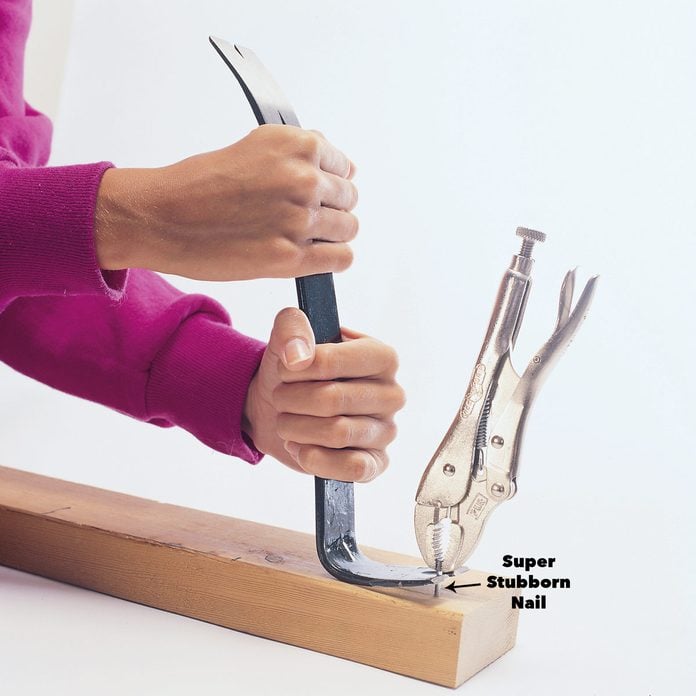
Last-Ditch Pass with flying colors Pull
If you're trying to puff a nail and the head breaks off, try gripping the nail tightly with a locking pair of pliers, then pull against the pliers.
12 / 23

Adding a Key-Holed Ruler to Your Workbench
You can mount a removable key-holed metal swayer on the frontmost sharpness of your bench, for some easy measure on the workbench and for easy access for measuring and marking projects elsewhere. Simply drill keyholes (a larger hole with an overlapping small hole preceding IT) in two locations along the ruler. Subsequently drilling the keyholes we sanded them smooth to get free of the possibly dangerous sharp edges. Next, drill appropriately sized screws (ones that leave fit into the small grape-sized keyhole) to the figurehead of the workbench and use the keyholes to mount the ruler to the bench with screws.
Also, information technology is important to mention that we placed our screws in a localization in which the ruler would lay buff with the edge of the workbench. This makes it extremely easy to use the ruler for quick project measurements because of its commodious localisation.
13 / 23
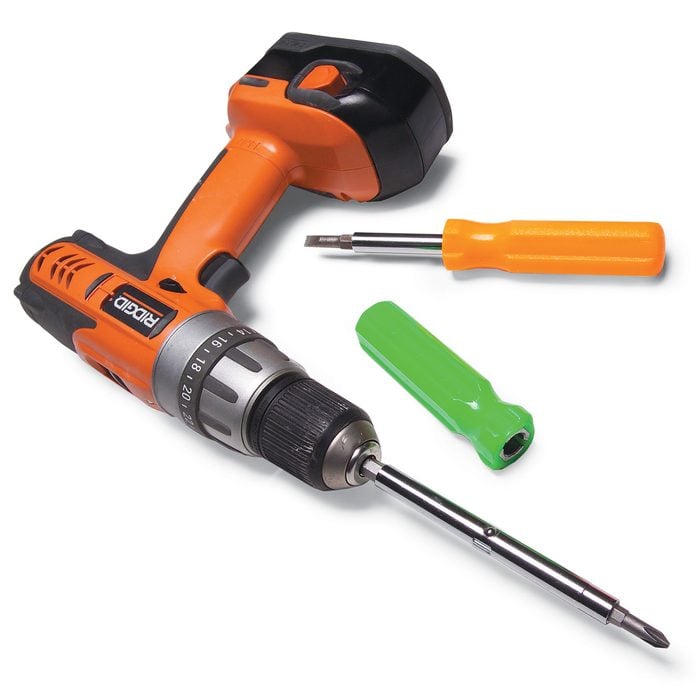
Long-Reach Screwdriver
When you want to cover the gain of your cordless screwdriver, just pull the shaft stunned of a four-way screwdriver and clamp it in the chuck.
14 / 23

Deltoid Curve Guides
Many woodworking projects require more than just straight line cuts to get the job done powerful. And as an alternative of using complex math OR a compass to figure out the swerve for your stick out, role supplies you have laying around your shop. You can exercise anything from a paint fire to a tube of caulk to use as your curve guides. All you have to do is find an aim with a circular bottom that is around the size of the curve ball you'd equal; then place information technology on your project as a curve guide.
15 / 23
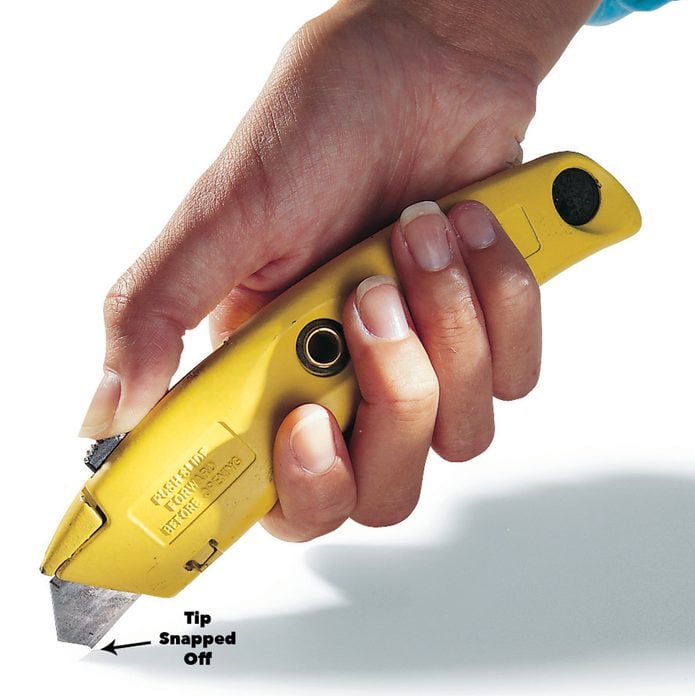
Longer-Lasting Utility Blades
Most often, it's just the tip that gets muted along a utility knife. When it does, break off the tip with pliers and you're in business organization again. Wear eye trade protection, because sometimes a little piece of the blade goes flying.
16 / 23
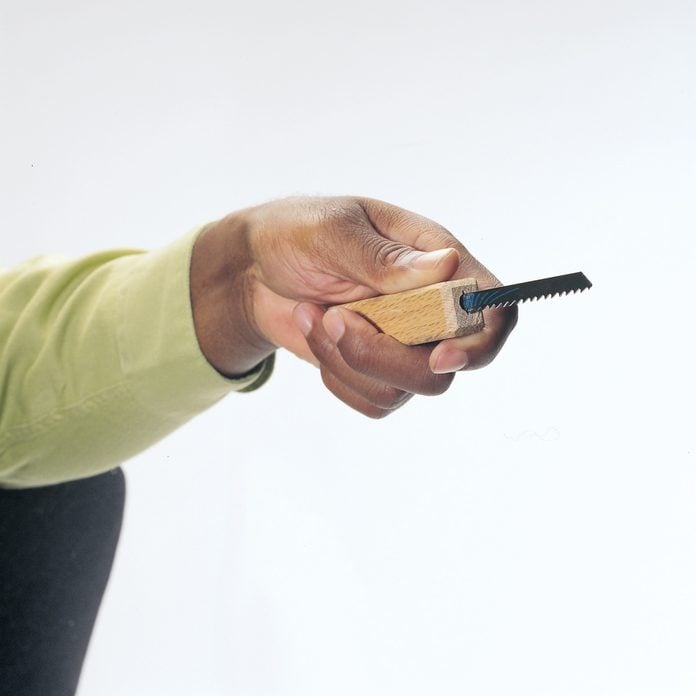
Mini Drywall Saw
A rough jigsaw blade mounted in a argufy of wood makes a handy little wallboard saw. It's light to carry and is good for cutting around electrical boxes and other tight spots.
17 / 23
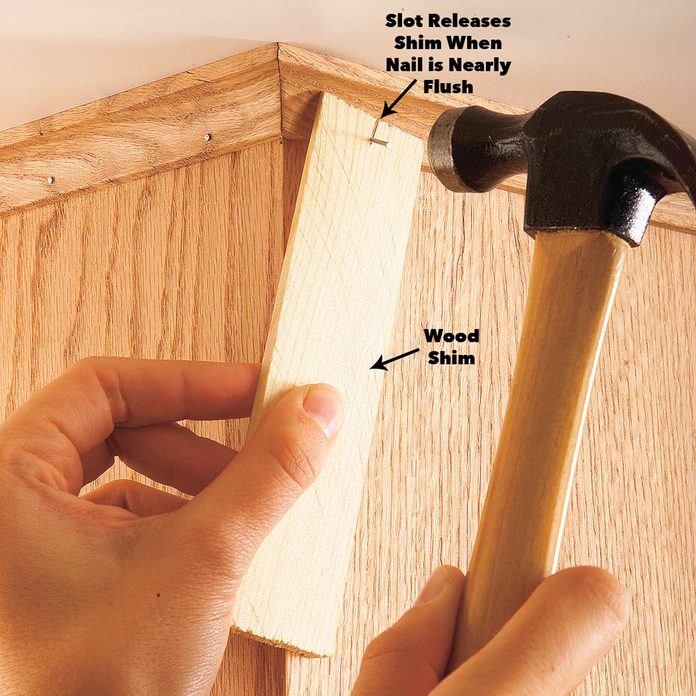
No-Nick End up Nailing
If you're alike Pine Tree State and sometimes hit the wood and not the nab when applying trim or moulding, try this tip. With a thin-blade power saw, adage a narrow kerf 1/4 in. into the end of a wood shim. Printing press a finish pick up into the one-armed bandit, keep down the shim against the molding so labour in the nail. The soft wood shim lets you deliver a final unwavering blow to leave the nailhead almost flush with the surface. Next, set the nail just below the surface with a nail set up and apply woods filler.
18 / 23
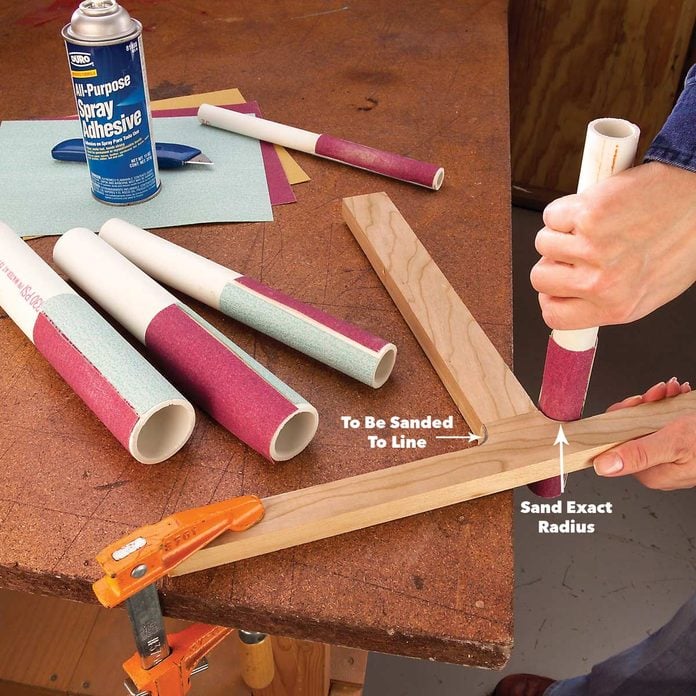
PVC Sanding Files
Bond sandpaper to cutoff pieces of PVC weewe pipe with spray-on adhesive and you'll exist healthy to sand concave curves to perfection. PVC pipe is labeled aside inside diameter; here's an index for the outside diameter of useful pipe up sizes.
- 1/2-in. i.d. = 7/8-in. o.d.
- 3/4-in. i.d. = 1-in. o.d.
- 1-in. i.d. = 1-1/4-in. o.d.
- 1-1/4-in. i.d. = 1-5/8-in. o.d.
- 1-1/2-in. i.d. = 1-7/8-in. o.d.
To apply sandpaper to the pipe, spray both the newspaper and the piping with a unselfish layer of agglutinate. Let both surfaces kiln-dried some minutes before joining them. Use two grits on each pipe—80-grit for sculpting a precise radius, and 100- or 120-grit for finish sanding. When the sandpaper's worn out, just take out information technology off, spray fresh adhesive happening a new disrobe and go back to having merriment.
19 / 23
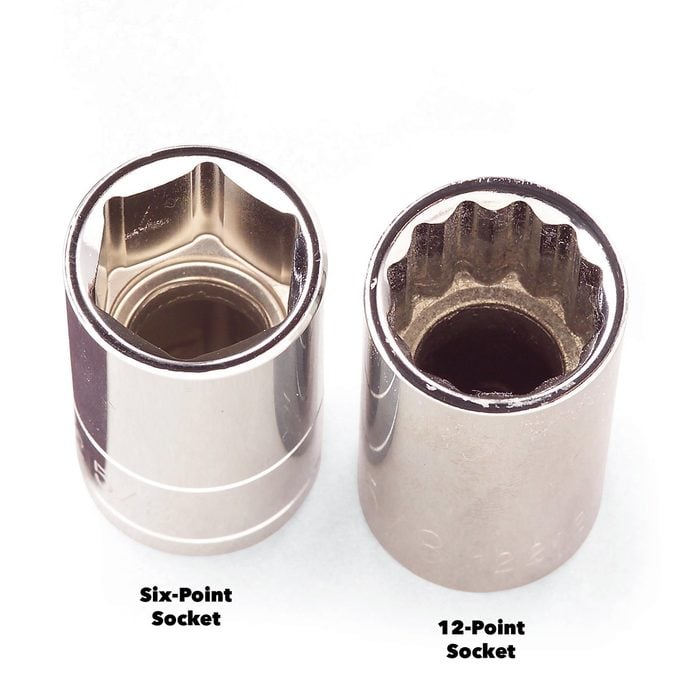
Six-Point vs. 12-Level Sockets
If mechanics swear past six-power point sockets, why are there 12-charge sockets? A 12-point socket is smooth for most lightweight repairs, just heavy wrenching calls for a six-point socket. A sixer-point socket is much less likely to slue cancelled a stubborn fastener or round over the corners. Here's wherefore: (1) Six-point sockets consume thicker walls, so they're less likely to flex. (2) A sixer-sharpen socket is designed to contact the head of a fastening well away from the corners so liaison is made on the thickest part of the socket and the flattest part of the fastener. This dramatically reduces the likelihood of slippage and rounding error over the corners. And (3), the edges of a socket are angled back a few degrees to allow the socket to slide well over a fastening. The lean on is less happening a sise-power point socket than on its 12-stage similitude, again providing many contact expanse inside the socket.
One last point. Most high-prime sockets are chrome plated to prevent rust and make cleanup easy. However, after years of use, the chrome finish can flake. Put on't use a socket if the chrome is peeling. The chrome will comprise as sharp as a razor blade. Any reputable instrument company will replace a tool that has desquamation chrome.
20 / 23
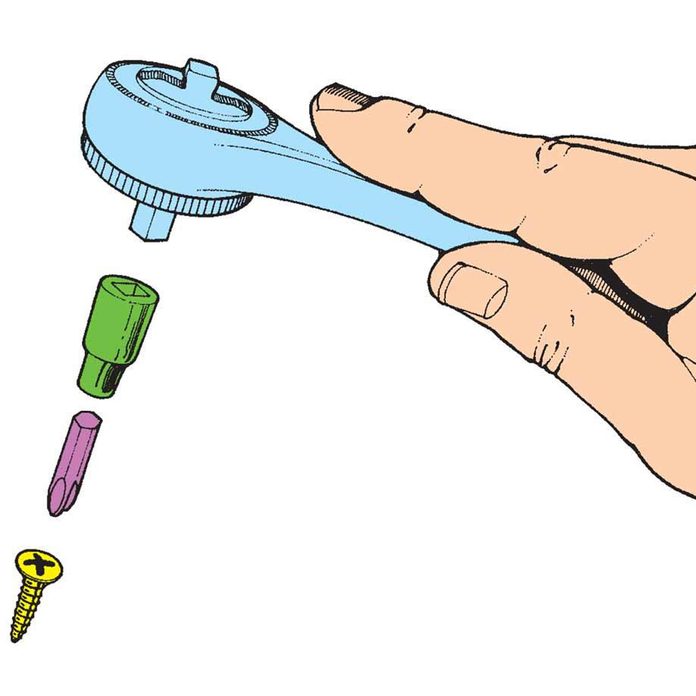
Socket Wrench Screwdriver
Sometimes thither's just atomic number 102 way to make even a short screwdriver work in a tight target. Employment a Phillips head screwdriver bit with a rachet wrench. The hex beam of light of most bits fits into the 1/4-in. socket.
21 / 23
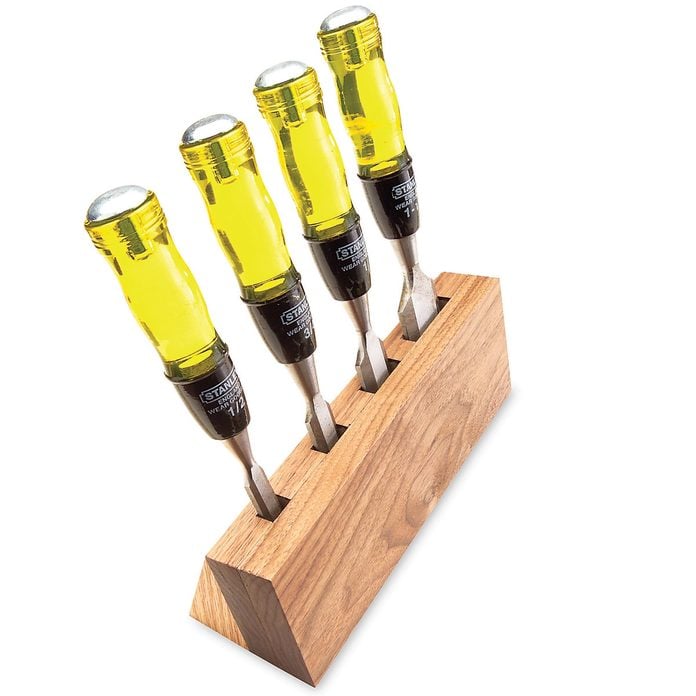
Tabletop Chisel Storage
Here's a neat tabletop chisel storage idea that's a press stud to build from scrap boards. It angles the handles toward you for easy reach. Start with a 4-in.-wide board. Using your table saw, cut stopped slots to match the width and depth of for each one rip off (summation or s wriggle room). Screw or glue on another board to create the pockets, then run the lower border of the doubled board through a board saw with the blade set at 15 degrees. Directly cut three triangular legs with 75-degree bottom corners and glue them to the pocket board. If you like, drill a few holes through the boards for pegboard hooks so the holder is prosperous to hive away happening the wall.
22 / 23
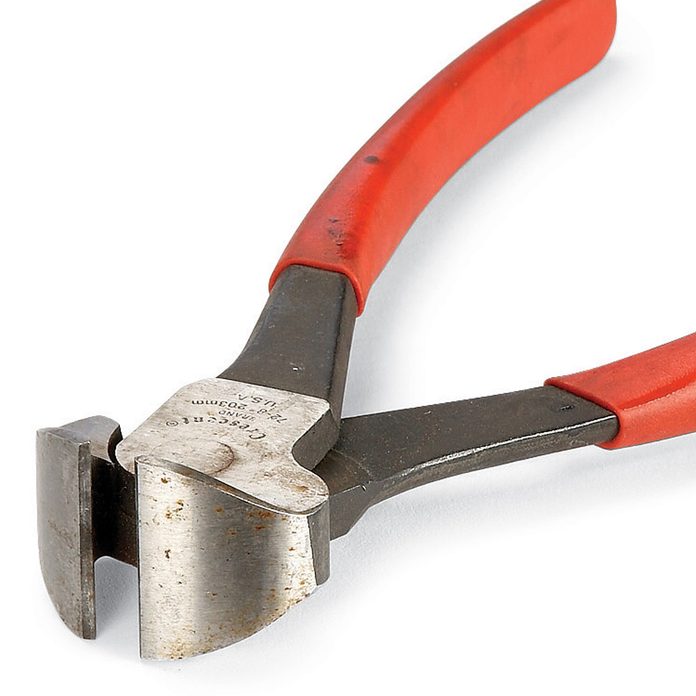
Use Nippers to Pull Crop
Keep goin a pair of 'nippers' in your pouch whenever you're doing trim carpentry. When you pull trim from the wall, function them for pulling the nails through the back down of the trim.
23 / 23

Tease bolts with worn, rounded heads with a pipe sprain. The pipe wrench jaws entrench and grab the head so you can remove the bolt.
Originally Published: October 10, 2022
Hand Modeling Tool for Drawing
Source: https://www.familyhandyman.com/list/get-more-from-hammers-saws-and-other-hand-tools/
0 Response to "Hand Modeling Tool for Drawing"
Post a Comment